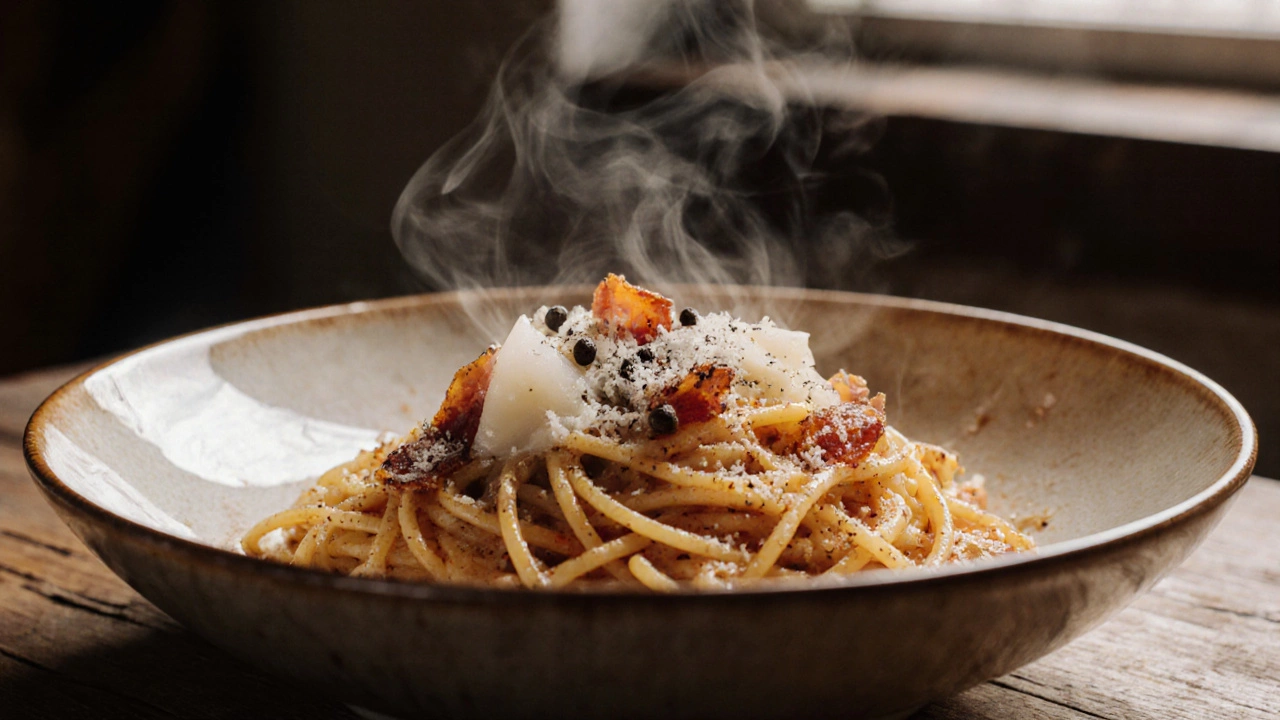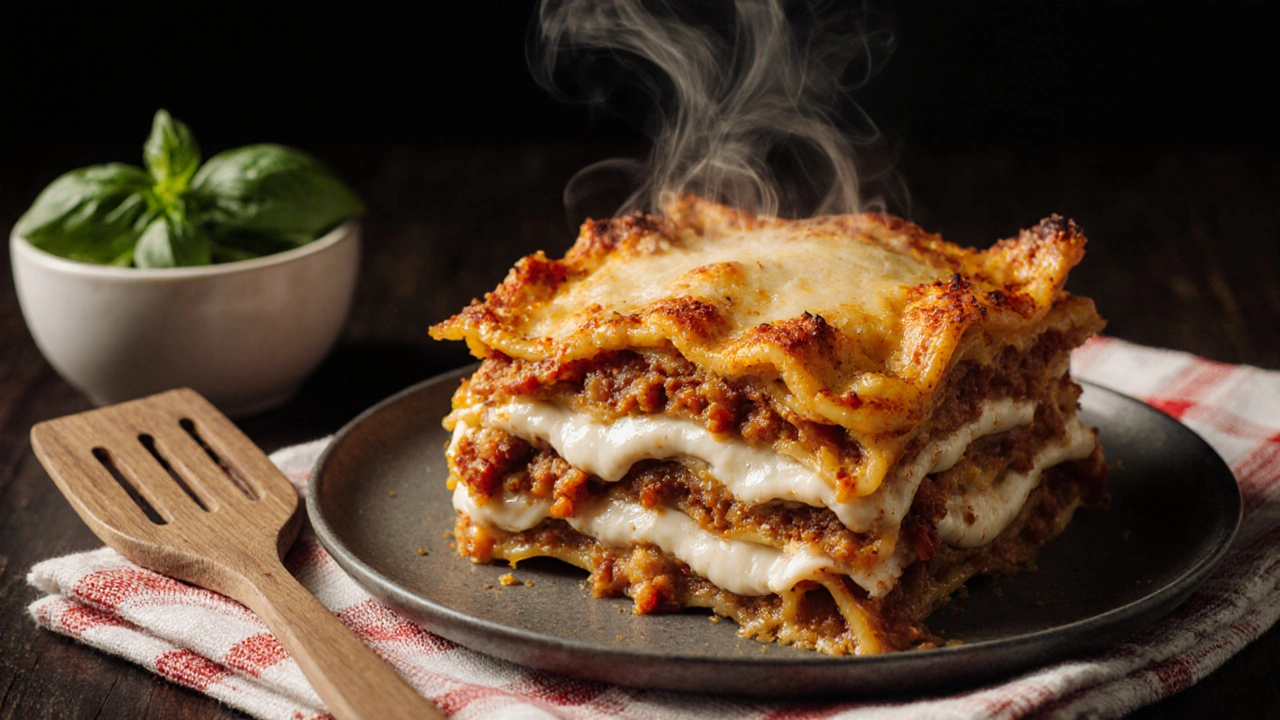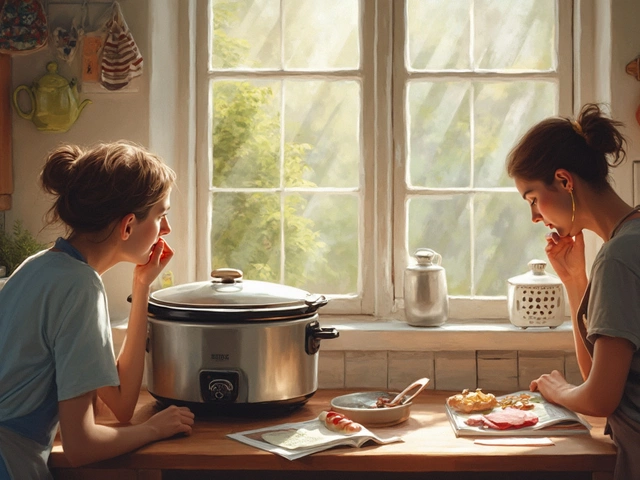
Pasta Dish Calculator
Select a Dish
Spaghetti Carbonara
Egg-based sauce with pancetta
Fettuccine Alfredo
Butter and Parmesan sauce
Penne Arrabbiata
Spicy tomato and chili
Lasagna
Layered casserole with ragù
Ingredients for Carbonara (4 servings)
There’s a reason these four pasta dishes show up on every Italian menu, from a tiny trattoria in Rome to a family kitchen in Wellington. They’re not just popular-they’re the foundation of Italian cooking. These are the big four pasta dishes: Spaghetti Carbonara, Fettuccine Alfredo, Penne Arrabbiata, and Lasagna. Skip the fancy twists and focus on these. Master them, and you’ve mastered Italian pasta.
Spaghetti Carbonara: Simple, But Not Easy
Carbonara looks like it should be simple-eggs, cheese, pancetta, pepper. But mess up the heat, and you get scrambled eggs instead of creamy sauce. The trick? Remove the pan from the heat before adding the egg mixture. Use hot pasta to gently cook the eggs into a silky coating, not a curdled mess.
Traditional carbonara uses guanciale, cured pork cheek, not bacon. It’s fattier, richer, and has a deeper flavor. If you can’t find it, use thick-cut pancetta. Skip the cream. Real carbonara gets its creaminess from egg yolks and pasta water. One egg yolk per person, plus one whole egg. Grate your own Pecorino Romano and Parmigiano Reggiano-pre-grated cheese has anti-caking agents that ruin the texture.
Black pepper isn’t just a seasoning here-it’s the star. Freshly cracked, generous amounts. The heat from the pepper balances the fat. Serve it hot, right after tossing. Let it sit? The sauce turns rubbery.
Fettuccine Alfredo: The American Version vs. The Roman Original
What you call Fettuccine Alfredo in the U.S. is not what Italians eat in Rome. The real version is two ingredients: butter and Parmigiano Reggiano. No cream. No garlic. No chicken. Just pasta, butter, and cheese.
The magic happens when you toss the hot pasta with a knob of cold butter and a handful of finely grated cheese. The starch on the pasta helps the butter and cheese emulsify into a thick, glossy sauce. You need high-quality butter-European-style, with at least 82% fat. And the cheese must be aged at least 24 months. Pre-grated Parmesan won’t melt right.
Most restaurants in America add cream to make it thicker and cheaper. That’s not Alfredo. That’s a different dish. If you want the real thing, skip the cream. Use just enough pasta water to help the sauce cling. It should coat the noodles, not drown them.
Penne Arrabbiata: Spicy, Fast, and Unapologetic
Arrabbiata means “angry” in Italian. It’s named for the heat from red chilies. This is the dish you make when you want flavor fast-under 20 minutes, no meat, no cream, just tomatoes, garlic, olive oil, and chili flakes.
Use San Marzano tomatoes if you can. Canned, whole, and crushed by hand. They’re sweeter, less acidic, and have a thicker pulp. Olive oil matters here-use a good extra virgin with a peppery bite. Garlic goes in cold oil, then gently heated until golden, not brown. Burnt garlic turns bitter.
Chili flakes are the key. Start with 1 teaspoon per 4 servings. Taste. Add more if needed. The heat should build slowly, not hit you all at once. Fresh basil at the end lifts the whole dish. Serve with a side of crusty bread to soak up the oil. It’s not fancy, but it’s one of the most satisfying pasta dishes you’ll ever make.

Lasagna: The Layered Masterpiece
Lasagna isn’t just pasta and cheese. It’s a slow-cooked casserole with layers of flavor. The real version uses fresh pasta sheets, not dried. They’re thinner, more tender, and absorb sauce better. If you can’t find fresh, use no-boil lasagna noodles-they work better than boiled dried ones.
The sauce is a slow-simmered ragù. Not just tomato sauce. It starts with soffritto: onions, carrots, and celery finely chopped and cooked in olive oil until soft. Then ground beef and pork, a splash of red wine, and crushed tomatoes. Simmer for at least two hours. The longer, the better.
Use ricotta, not cottage cheese. Drain it overnight in a cheesecloth to remove excess water. Mix it with egg, parsley, and a little nutmeg. Layer it between the ragù and béchamel. Yes, béchamel. The white sauce is essential. It balances the acidity of the tomato and adds richness. Top with mozzarella and Parmesan. Bake until bubbly and golden.
Let it rest for 30 minutes after baking. Cut into it too soon, and it falls apart. Resting lets the layers set. This isn’t a weeknight meal. It’s a weekend project. But the result? Worth every minute.
Why These Four? The Common Threads
These dishes have something in common: they’re built on technique, not ingredients. No fancy tools. No hard-to-find spices. Just good ingredients, handled right.
They all rely on pasta water. It’s not just for boiling. It’s the secret binder. Starchy, salty, and hot-it helps sauces cling. Always reserve a cup before draining.
They all use high-quality cheese. No pre-grated stuff. Grate it yourself. It melts smoother, tastes brighter.
They all avoid cream. Cream is a crutch. Real Italian pasta sauces get body from eggs, cheese, or reduction-not dairy additives.
And they all taste better the next day. That’s not a trick. It’s science. The flavors meld, the textures soften. Make extra. Eat leftovers cold, straight from the fridge.

What to Avoid
Don’t overcook the pasta. Al dente isn’t a suggestion-it’s a requirement. The pasta should have a slight bite. It finishes cooking in the sauce.
Don’t rinse pasta after draining. You wash off the starch that helps the sauce stick.
Don’t use olive oil to prevent sticking. It creates a barrier. Toss with a little sauce instead.
Don’t add butter to the boiling water. It doesn’t help. It just floats on top.
How to Start
If you’ve never made one of these, start with Penne Arrabbiata. It’s the fastest, the most forgiving, and teaches you how to build flavor with simple ingredients. Then try Carbonara-it’s the most technique-sensitive. Once you nail that, you understand heat control and emulsification.
Save Lasagna for a Sunday. It’s the reward for mastering the others.
These four dishes aren’t just recipes. They’re lessons in Italian cooking. Once you get them, you can adapt anything else. Try adding mushrooms to Carbonara. Swap spinach into the lasagna. Make Alfredo with lemon zest. But start with the classics. Get them right. Then make them yours.
What makes a pasta dish part of the big four?
The big four are recognized for their historical roots in Italian home cooking, their widespread popularity across Italy and globally, and their reliance on simple, high-quality ingredients prepared with precise technique. They’re not trendy-they’re timeless. Each dish represents a different region and cooking method, from the egg-based carbonara of Rome to the layered lasagna of Bologna.
Is Fettuccine Alfredo really Italian?
Yes, but not the version you find in most American restaurants. The original Fettuccine Alfredo was created in Rome in the early 1900s by Alfredo di Lelio. He made it with just butter and Parmesan cheese. The cream version was invented later in the U.S. to appeal to American tastes. Real Italian Alfredo has no cream, no garlic, and no chicken.
Can I use dried pasta for these dishes?
Yes, you can. Dried pasta works fine for Carbonara, Arrabbiata, and Alfredo. For Lasagna, use no-boil noodles-they’re better than boiled dried ones. Fresh pasta is ideal, especially for delicate sauces like Alfredo, because it’s more porous and absorbs sauce better. But don’t let lack of fresh pasta stop you. Good dried pasta, cooked al dente, still delivers.
Why is carbonara so hard to get right?
Carbonara is tricky because the sauce is made with raw eggs. If the pasta is too hot, the eggs scramble. If it’s not hot enough, the sauce won’t emulsify. The key is removing the pan from heat before adding the egg mixture, then tossing quickly. The residual heat cooks the eggs gently into a creamy texture. It’s a balance of timing and temperature.
What’s the best cheese for these dishes?
For Carbonara and Arrabbiata, use Pecorino Romano for saltiness and Parmigiano Reggiano for depth. For Alfredo, only Parmigiano Reggiano-aged at least 24 months. For Lasagna, use a mix of ricotta (drained), mozzarella (fresh, not low-moisture), and Parmesan. Never use shredded cheese from a bag. Grate it yourself for the best melt and flavor.





